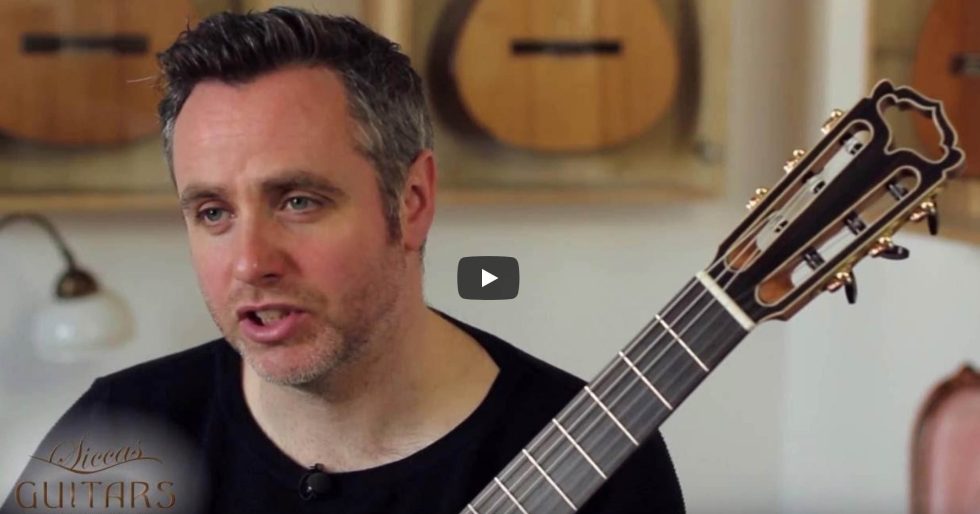
Mastering Finger Independence: A Tutorial with Matthew McAllister | Siccas Guitars
At Siccas Guitars, we aim to bring you the best advice from leading guitarists to help you enhance your playing technique. In our latest video, renowned classical guitarist Matthew McAllister shares invaluable insights on improving finger independence, a crucial skill for classical guitarists that significantly elevates precision, tone, and musicality.
In this tutorial, Matthew explains how developing control over each individual finger can transform your guitar playing. Below, we'll explore the key takeaways from the video, as well as additional tips and exercises that will help you strengthen finger independence.
Why Finger Independence Matters
Finger independence is the ability to control each finger of your fretting hand independently from the others. For classical guitarists, this is essential for executing complex passages with precision, performing intricate polyphonic textures, and playing fluidly across different musical styles.
When you develop good finger independence, your playing becomes:
- More precise: You can fret notes cleanly, even in fast or difficult passages.
- More expressive: Having control over each finger allows you to shape the dynamics and tone of your music with greater detail.
- More efficient: It minimizes unnecessary tension in your hand, allowing you to play for longer periods without fatigue.
Exercises for Developing Finger Independence
In the video, Matthew McAllister walks us through some foundational exercises to develop finger independence. Here are a few exercises and techniques that he and other guitarists recommend:
- Spider Exercises One of the most popular exercises for building finger independence is the spider exercise. This involves placing each finger on a different fret and string, then moving them in a coordinated pattern without lifting the other fingers unnecessarily. For example, you can alternate between fretting the 1st and 4th fingers while keeping the 2nd and 3rd fingers stable.
- Chromatic Scales Playing chromatic scales slowly, ensuring that each finger works independently of the others, is another great way to develop control. Focus on making sure every note is clean and that no fingers are accidentally dragging or lifting when they shouldn't.
- Finger Combinations Work on different finger combinations—pair up fingers and practice switching between them. For example, use your 1st and 2nd fingers, then switch to 1st and 3rd, and so on. Practice slowly to ensure that the transitions are smooth and that each finger is independently fretting the note.
- Scales with Stretching Play scales where you stretch between frets (e.g., moving from the 1st to the 4th fret) to develop flexibility and independence. These types of exercises force your fingers to work independently as each one must be placed in a different position on the fretboard.
Understanding the Challenges
Matthew emphasizes that finger independence is one of the more challenging skills for guitarists, especially beginners. Many players struggle with involuntary finger movements, which can cause the music to sound less clean or precise. Building finger independence takes patience, but with consistent practice, you'll notice a significant improvement in the fluidity of your playing.
Practical Tips for Improving Finger Independence
Along with the exercises, here are some extra tips that can help you on your journey toward better finger independence:
- Relaxation: Keep your hand relaxed while playing. Tension in your hand or wrist can hinder the mobility of your fingers.
- Consistency: Practicing for a few minutes every day is more effective than longer, irregular practice sessions. Consistency will help build muscle memory.
- Use a Metronome: When practicing finger exercises, use a metronome to ensure that your movements are even and rhythmically accurate.
Benefits Beyond Technique
Beyond the technical advantages, improving finger independence also enhances your musical expression. When you can control each finger independently, you can bring out different voices in a piece of music, especially in polyphonic compositions. This allows you to create a more layered and dynamic interpretation of the music.
Watch the Full Tutorial
For more detailed exercises and insights into developing finger independence, watch the full tutorial with Matthew McAllister. This video is perfect for both beginners looking to improve their basic technique and advanced players seeking to refine their finger control.
Conclusion
Finger independence is an essential skill for every classical guitarist, providing the foundation for cleaner, more expressive, and technically proficient playing. By practicing regularly and focusing on specific exercises, you'll gradually develop the finger strength and coordination needed to take your guitar playing to the next level. Whether you're a beginner or an experienced guitarist, mastering finger independence will open up new possibilities in your music.


















